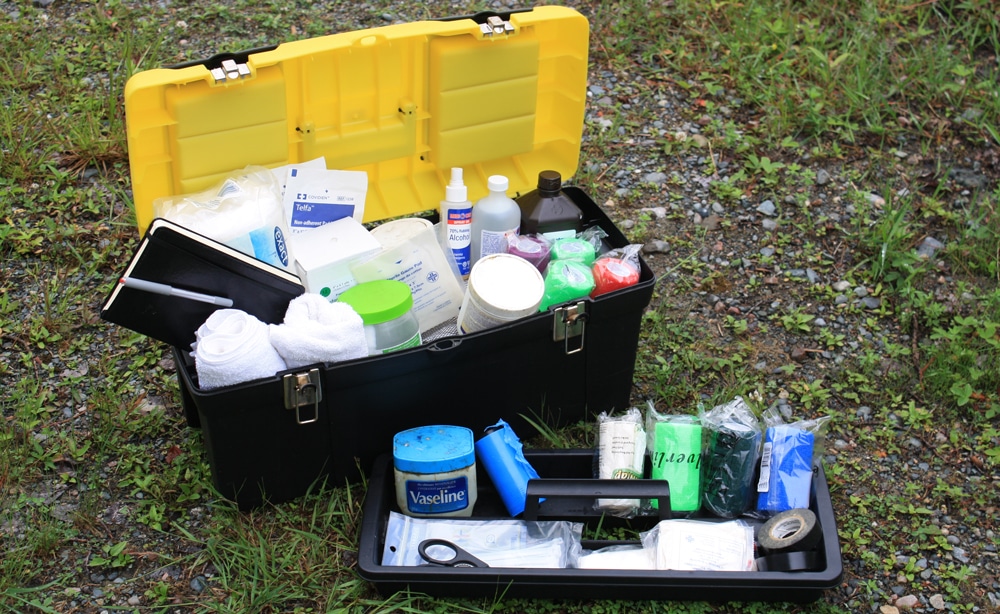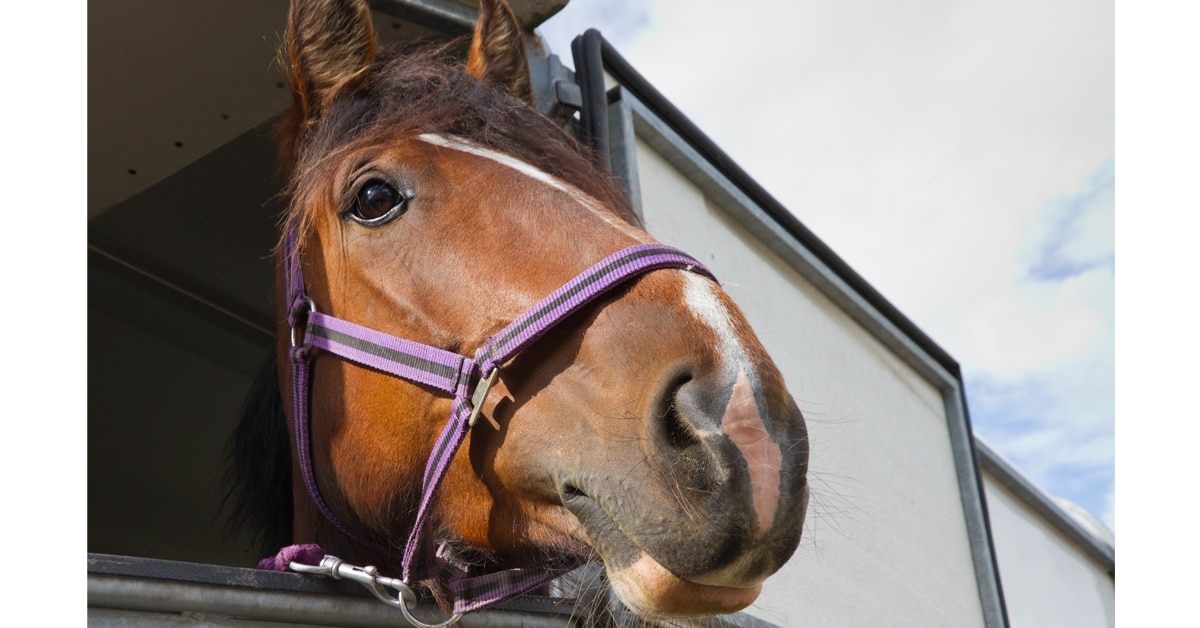Whether you’re travelling to a show, a clinic, going camping with your horse, or just going on a day trip, it’s important to be as prepared for emergencies as possible. According to large-animal veterinarian Dr. Amy Gaw, choosing the right items for your travel first-aid kit is one of the best ways to be ready for any situation you can encounter on the road.
Dr. Gaw has been handling emergency calls in northern Ontario for over a decade. She currently practices out of Temiskaming Veterinary Services in Temiskaming Shores, Ontario. She kindly took time out between power floating horses to talk about a few essentials she wishes her clients would include in their travel first-aid kits.
For a comprehensive, itemized, and printable list of all items that should be included in your first-aid kit, check out Equine Guelph’s First-Aid Infosheet.
The Three Main Categories of Emergencies
Dr. Gaw says your first-aid kit is not intended to stand in for the care of a vet, but rather to give you the basic necessities to get you through a variety of different emergencies until professional help can arrive.
Most of the emergency problems you will encounter while traveling fall into three main categories: colic, choke, and cuts/wounds. Being prepared for these three categories in a general sense will give you the adaptability to deal with many different specific possibilities.

Make sure you’re prepared for minor and major emergencies by customizing your travel first-aid kit to meet your needs, including the three items you need to bandage a wound: elastic gauze, sterile pads, and Vet Wrap. (Charlie Fiset photo)
Colic
Colic during transit can be very dangerous because you might be far away from veterinary help, so Dr. Gaw suggests packing an item that will buy you time.
“Banamine, a brand name of flunixon meglumine, is a powerful anti-inflammatory painkiller for visceral pain like that experienced during a colic,” says Dr. Gaw.
In an emergency, it can save your horse’s life, but it should only ever be used in consultation with your vet.
“It’s very important to make time to consult with your vet before leaving so you know how to correctly dose and administer the drug and how to care for your horse until help arrives.”
Whenever possible, Gaw advises having your vet walk you through the process over the phone.
Cuts/Contusions/Wounds
Dr. Gaw says the basic formula to bandage almost any wound – even ones in tricky places – involves three main items: a sterile non-stick pad, sterile elastic gauze, and Vet Wrap.
After cleaning and disinfecting the wound with an antiseptic like betadine solution, place the non-stick pad on top of the wound, then wrap it with gauze to keep it in place, tying or tucking in the ends. Now the wound can be safely wrapped with Vet Wrap.
Depending on the wound’s location, you may need to use extra padding. It’s also helpful to have a roll of cotton or clean pillow wraps for extra padding. Maxi pads are also a good alternative, but Dr. Gaw’s personal favourite for foot injuries, which are notoriously difficult to wrap, are diapers. “They’re very absorbent and can be easily wrapped around a hoof and fastened in place if need be.”
As a general rule, only include reliable items you have direct experience with. For example, you don’t want to discover during bandaging that non-elastic gauze is actually a lot less effective and difficult to work with than elastic gauze.
Choke
Because horses breathe through the windpipe and ingest food through the esophagus, choking, though very dangerous, does not typically put horses in danger of suffocation. When it comes to choke, Dr. Gaw says doing less while waiting for help is often more helpful. “You can sometimes have success massaging the obstruction out with your hands, but this has to be done carefully to avoid lodging it further.”
While waiting for the vet, “Never, never attempt to flush it out with water,” Gaw says. This can lead to disastrous consequences because the water rebounds off the obstruction, is inhaled into the windpipe, and then into the lungs, and can cause drowning.
Dr. Gaw’s Number One Must-Have
Dr. Gaw insists that a notebook is the most important item you can pack in your kit. The number one thing people struggle with in an emergency is how to give the vet directions to get where they are. “People panic under stress,” Gaw says, “And they forget what to do. It’s not easy finding ‘the barn with the green roof’ in the dark at three a.m.”
Whether you’re going to a well-known showground or a small, rural show set up in a field, know your travel route well, and have the contact information of the location you’re travelling to on hand. Even if you’re only travelling half an hour away and you feel confident any vet can find you, you might be getting the new person in the office while everyone else is out on emergency calls.
“Have your directions written down like a script you read from,” Gaw advises. “Know highways and street names, and know directions for getting to where you from the north, east, south, and west.”
At larger showgrounds, emergency numbers and directions are often available in your registration package. These shows also typically have helpful officials and a vet on-call or at the showgrounds, but it’s important to keep in mind that emergencies can happen at inconvenient times. You don’t want to be stuck without contact information on the night after the Grand Prix when everyone has either already left or is out celebrating. Getting into the habit of writing down directions and emergency contacts as a part of your unpacking process can make a huge difference in an emergency.
You can also use the notebook to record your horse’s temperature, pulse, and respiration, and other pertinent information like symptoms of colic. To that end, Gaw advises packing a thermometer and stethoscope, learning how to use them, and also being familiar with your horse’s baseline stats, which you can record before you leave. These simple items can provide your vet with vital information while you’re waiting for help.
Lastly, whether you’re planning to host a show or clinic or not, Dr. Gaw asks that all owners and riders take the time to make sure their barns have easily accessible, clear directions written down in a central location. Being prepared is the best good luck charm, no matter what type of emergency arises.

